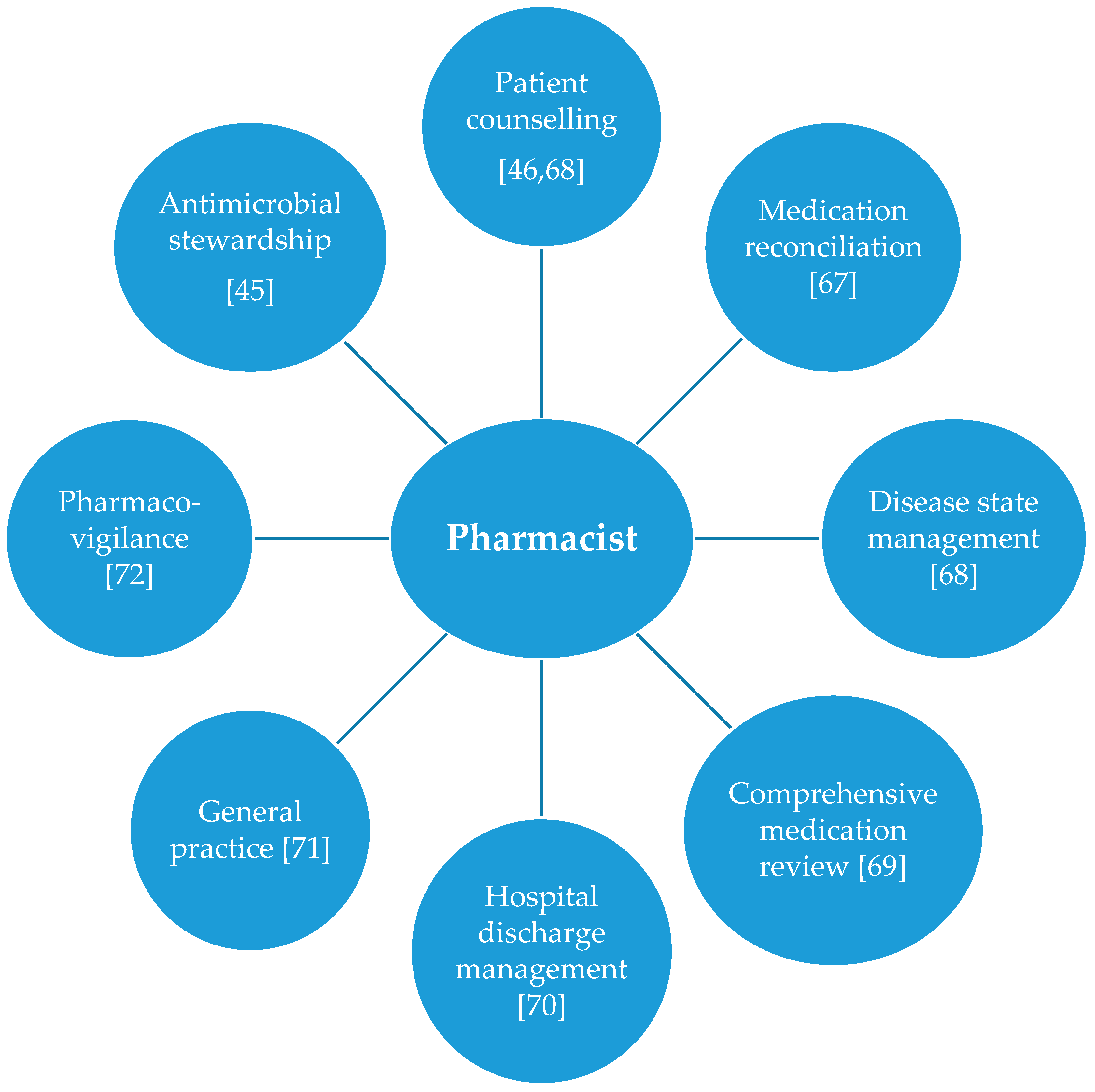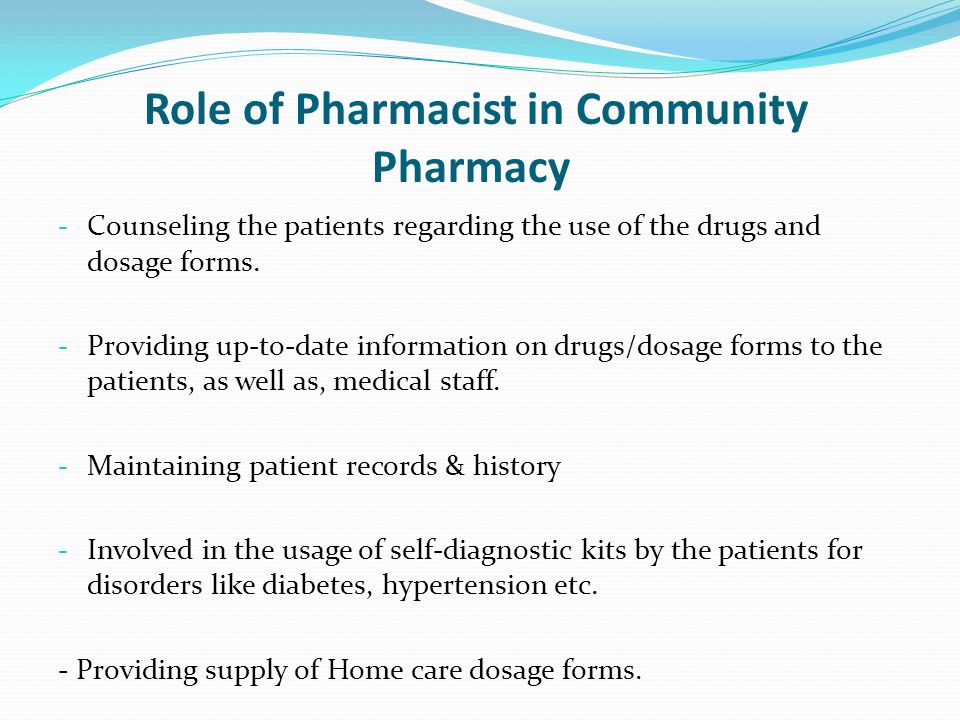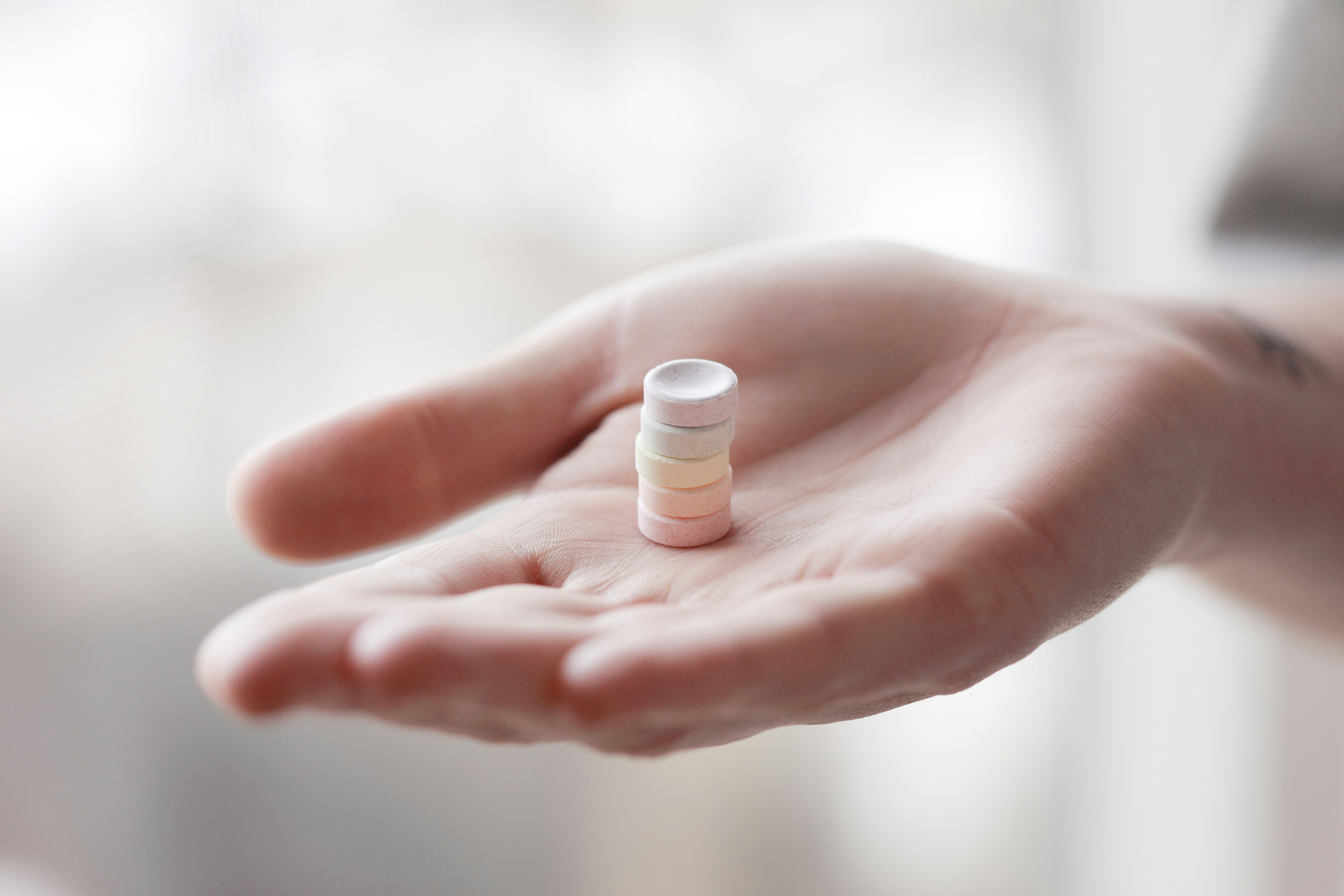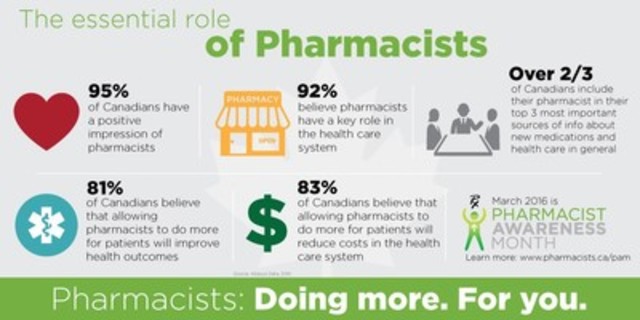The Role Of A Best Pharmacist Gifts
by William
Posted on 03-08-2020 04:47 AM

While medication dispensing is the best-known function of the pharmacist, pharmacists—through counseling, medication therapy management (mtm), disease-state management, and other means—can play a pivotal role in patient care. There are opportunities in every type of pharmacy practice to improve patients’ adherence and therapeutic outcomes, and pharmacists must embrace and act on them.

Role of clinical best pharmacist gifts pharmacist coffee mug funny gifts for a pharmacist .
Pharmacy and pharmacists have been long been recognised for their role in ensuring the safe and effective supply of medicines to patients. In the uk, gift for a pharmacist pharmacist coffee mug gifts for your pharmacist s have been able to prescribe for almost a decade now, across a number of therapeutic areas and clinical settings. Having worked as a pharmacist in the nhs for 15 years, i’ve really welcomed this shift – as a prescribing pharmacist novelty gifts pharmacist coffee mug pharmacist cofee mug i have seen my clinical progress and confidence grow.
The american pharmacists association is accredited by the accreditation council for pharmacy education as a provider of continuing pharmacy education. The following activity is approved for 0. 5 contact hour of cpe credit (0. 05 ceus). The acpe universal activity number for this activity is 0202-0000-19-122-h04-p/t. To obtain credit for completing the role of the telehealth pharmacist: regulatory considerations, watch the archived webinar, complete the assessment with a grade of 70% or better, complete the evaluation questions, and then claim credit. Participants need to have a valid pharmacist. Com username and password to claim credit. After credit has been claimed, please visit cpe monitor for your transcript.
A person licensed to prepare, compound, and dispense drugs upon written order ( prescription ) from a licensed practitioner such as a physician, dentist, or advanced practice nurse. A pharmacist is a health care professional who cooperates with, consults with, and sometimes advises the licensed practitioner concerning drugs. For a licensed pharmacist, five years of education is a minimum, and some curricula require six years. This gives the pharmacist advanced knowledge of the chemical and physical properties of drugs and their available dosage forms, and he or she is thus qualified to play a key role in supplying information about drugs (both prescription and over-the-counter) to patients—those to whom such information is most important. Since the pharmacist may be the last health care professional to communicate with the patient or a significant other before the medication is taken, he or she is therefore in an ideal position to discuss the drug with those concerned. The discussion may include any side effects associated with the drug, its stability under various conditions, its toxicity, its dosage, and its route of administration, all of which may be reassuring to the patient and be of benefit in helping insure patient compliance with the drug regimen.
Pharmacists play a critical role in delivering well-rounded patient care. They not only dispense medicine, but top pharmacists even offer advice to doctors about medicines that could hurt their patients or that don't mix well with other drugs. In its "top ten reasons to become a pharmacist," the american association of colleges of pharmacy included several points related to the general benefits of working with patients and helping them get better. In small communities, pharmacists develop relationships with regular customers over a period of time.
The changing role of the pharmacist in the 21st century
In recent years, several important pieces of legislation (21st century cures act, comprehensive addiction and recovery act) have substantially increased federal funding directed at the opioid crisis. As previously discussed, in october of 2018, president donald trump signed the substance use-disorder prevention that promotes opioid recovery and treatment (support) for patients and communities act, which contains several provisions relevant to pharmacists.
 The most directly applicable section (chapter 2—empowering pharmacists in the fight against opioid abuse) instructs the department of health and human services, the drug enforcement administration, the us food and drug administration, and the centers for disease control and prevention to develop and disseminate materials for pharmacists, other healthcare providers, and patients on circumstances in which pharmacist may decline to fill controlled substance prescriptions. Input from boards of pharmacy, pharmacy associations, medical societies and licensing boards, healthcare providers, and patients will be solicited to support the development of these materials. Although it is unclear from the legislative language what specifically these materials will address, guidance of this type is sorely needed as pharmacists often express uncertainty in their role screening controlled substance prescriptions [ 99 ].
The most directly applicable section (chapter 2—empowering pharmacists in the fight against opioid abuse) instructs the department of health and human services, the drug enforcement administration, the us food and drug administration, and the centers for disease control and prevention to develop and disseminate materials for pharmacists, other healthcare providers, and patients on circumstances in which pharmacist may decline to fill controlled substance prescriptions. Input from boards of pharmacy, pharmacy associations, medical societies and licensing boards, healthcare providers, and patients will be solicited to support the development of these materials. Although it is unclear from the legislative language what specifically these materials will address, guidance of this type is sorely needed as pharmacists often express uncertainty in their role screening controlled substance prescriptions [ 99 ].
The pharmacist I am today
Cindy mehallow, monster contributing writer
a decade or so ago, patients could leave the hospital without seeing, speaking with or even thinking about a vital member of their healthcare team: the pharmacist.

Pharmacy School Accreditation [ edit ]
The accrediting party for pharmacy technician programs is the american society of health-system pharmacists (ashp). Ashp certified programs are available through many colleges and professional training schools. On average, a certificate programs can be completed within nine months to a year. Some student will choose to pursue an associate's degree if their educational goals later include a bachelor's degree.

Working as a pharmacy technician can open doors to other professional avenues, making it a stepping-stone in your career path. With minimal training required and optimal opportunity for learning and gaining experience, it can serve as a solid foundation for numerous other healthcare careers. Did you know you don’t even have to be 18-years-old to work as a pharmacy technician in some states? if you’re wanting to pursue a career in any healthcare field, you should carefully consider becoming a pharmacy technician while in high school. Not only can you work on weekends, but if your school offers a co-op program, you can actually earn high school credits for working as a pharmacy tech. Some schools even allow you to leave after your first class and finish the rest of your school day working in a pharmacy. Make sure to talk with your high school counselor about different co-op opportunities.
The role of pharmacists
Category: pharmacy
by omudhome ogbru, pharmd - august 8, 2016 | views: 94773 | likes: 1 | comment: 0
high salary: pharmacists are one of the highest paid medical professionals.
 New graduates can make over $100,000 a year. See pharmacy salaries for different practice settings. A variety of pharmacy jobs: although many pharmacists opt for the retail or hospital setting there are many types of jobs for pharmacists. Even within the retail or hospital setting pharmacists may perform different roles. See 22 types of pharmacist jobs and careers.
New graduates can make over $100,000 a year. See pharmacy salaries for different practice settings. A variety of pharmacy jobs: although many pharmacists opt for the retail or hospital setting there are many types of jobs for pharmacists. Even within the retail or hospital setting pharmacists may perform different roles. See 22 types of pharmacist jobs and careers.
Pharmacists play a critical role in the health care field, providing patients with the medications they need to recover from illnesses and injuries. Many pharmacists work in retail or clinical pharmacies, though you can find other potential jobs in academia, the military, research, or pharmaceutical manufacturing. While you'll need a great deal of education to start your career as a pharmacist, this career choice offers a wealth of opportunities. In fact, it appears first on career builder's list of top-paying jobs for women.
The healthcare industry is currently experiencing one of the largest talent deficits in recent memory. That talent deficit in the healthcare industry isn’t limited to certain roles, it’s a massive talent draught everywhere — including pharmacists. Pharmacists are currently experiencing a large uptick in demand for the foreseeable future in the healthcare industry. As the bureau of labor statistics highlights, pharmacists are expected to see a 6% rise in employment over the course of the next decade.
We provide an overview of the various facets of pharmacist practice in the intensive care unit (icu), the current extent to which pharmacists are present in the icu, along with a discussion on barriers and lessons learned in garnering support for such a role. Caring for critically ill patients in an intensive care unit.
Lecom school of pharmacy preceptors receive the following benefits: participate in the training of future pharmacists to ensure the highest standards possible. Give back to the profession that has made you a great role model. Involve students in developing and maintaining new or expanded clinical services. Keep abreast of current medications and treatment modalities.
Why visit your pharmacist?
Think about your last visit to pick up medication at a pharmacy…unless you were picking up the drug for the first time, you likely interacted with a cashier, the assistant to the pharmacist, likely everyone but the pharmacist (and you were probably lucky if you even saw the pharmacist. )of course, the pharmacist is always there: one of the things that stuns us consistently is the modest, unintimidating air of these modern-day alchemists. Perhaps it’s the washing away of the stress of the doctor’s office at an endpoint that has some sort of hopeful next-step (i. E. You have a condition but now here’s the help for it. ) but either way, we are indebted to all the competent pharmacists out there who have learned that a little humility can be as powerful as the most tried and tested medication.
Pharmacist Job Description, Duties, and Responsibilities
The job description of a pharmacy manager will usually contain the following duties, tasks, and responsibilities which they are expected to carry out as shown in the example below: program, direct, review, and rectify pharmacy procedures. Render assistance to the technical and professional personnel in mixing, compounding and dispensing of various medications utilized by and sold to hospital patients.
The practice of pharmacy
The practice and research networks (prns) are a unique offering from accp that allows its members to interact via email list messages. This permits for the exchange of timely information to improve both patient care and practice in specialty areas of pharmacy. Specifically for student members, prns present the opportunity to gain perspective on major areas of.
Treatment of covid-19 with remdesivir mask poster: promote the use of masks for those entering your pharmacy updated -treatment of covid-19 with chloroquine or hydroxychloroquine covid-19 and pharmacy services map h2-receptor antagonist (h2ra) shortages protecting the front line: covid-19 day-to-day questions : cpha has created an faqs resource to help pharmacists manage day-to-day questions about covid-19 in their pharmacies. This information is meant to support policy, practice and clinical guidelines being developed across the country, and will answer key questions pharmacists may have when supporting their patients during the pandemic. The content will be updated regularly.
Although we attempted to create accessible resources relevant to the entire pharmacy workforce, limitations existed for what we could accomplish in a national engagement campaign. Differences exist state-to-state regarding pharmacist scope of practice (eg, blood glucose testing), and each pharmacy has its own unique facilitators and barriers to engage in type 2 diabetes prevention activities. Although cdc might not be able to address the myriad needs of the entire pharmacy workforce related to national dpp adoption, we are more in tune and better positioned to support our partners as they expand the reach of our efforts.
After completing all that education, pharmacists still can't practice until they meet state licensing requirements. Pharmacists must pass the north american pharmacist licensure exam, a 185-item computer-based test. It covers knowledge of health-care information and standards of drug therapy and pharmacy practice and costs a hefty $485 at time of publication. Pharmacists also need to pass a second exam on pharmacy law. Many states use the mpje, or multistate pharmacy jurisprudence examination, a 90-item test costing an additional $200. Once licensed, pharmacists must meet state continuing education requirements to keep working.
Roles of a Pharmacist in a Hospital Pharmacy
Position summary under direct supervision, the pharmacy technician assists pharmacist in providing medications to patients and performs routine duties in hospital pharmacy.
Journal of applied pharmacy, journal of the pharmacists association, journal of pharmacy and pharmacology, hospital pharmacy, the pharmaceutical journal, pharmacist's letter.
Methods of handling drugs in hospitals without pharmacist most extended care facilities and small hospitals do not employ full time pharmacist, many of them contract for such services. Medical staff rely upon community pharmacist to dispense medication from local pharmacy and deliver the facility. Pharmacy service in small hospital is provided by department of pharmacy of a nearby large hospital.
A large, dedicated clinical trial pharmacy team support over 150 ctimp studies running across the royal and broadgreen sites. The team comprises specialist assistants and dispensers, technicians and specialist technicians for haematology studies and early-phase studies run through our clinical research unit, and specialist pharmacists. In addition to working on ctimp studies we have atmip and ‘device’ studies open involving a wide variety of disease areas from alzheimer’s disease to breast cancer. The team works closely with colleagues around the hospital (research nurses, doctors, assistants, and research & development team), the university and the trial representatives to give a streamlined service to patients and colleagues to make sure drug is available in a fast and safe manner.
The majority of pharmacists (54% according to bls data ) work in grocery stores like kroger and walmart and drug stores like cvs and walgreens , but they can also work in a variety of other settings. In hospitals, inpatient hospital pharmacists prepare more injectable medications. “you’re not counting pills; you’re drawing medication with a syringe for iv bags,†moss says. “there’s also a much greater sense of being part of something when you’re working in a hospital pharmacy. â€.
Becoming a pharmacist requires years of training. This includes at least two or three years of undergraduate studies with an emphasis in anatomy, biology and chemistry. Some programs require candidates to have a bachelor’s degree. Once admitted into the doctor of pharmacy program, the student pharmacist takes additional courses for three to four more years. In addition to course work in pharmacology-related studies, the student works in a variety of work environments, such as retail pharmacies and hospitals. At the end of this rigorous training period, the successful student pharmacist receives a doctor of pharmacy, or pharm. D. Degree.
· translate hi esther- one benefit of being a pharmacy technician is that it can help you decide if you do indeed what to become a pharmacist. Many states require you to pass a test to be come certified (most people take a class first) and then you have to pay a fee with board to register to work in that state. Keep in mind if you don't like retail, you can move into hospital before you completely give up on pharmacy all together. There are so many different places where pharmacists can work so look into this as well. Another benefit beyond helping you decide your future is that it will definitely help you in school. You will have a heads up on others who haven't worked. You have worked with these drugs day in and day out. I was a tech before i became a pharmacist.
What Is the Role of a Pharmacy Technician?
State laws decide the activities that pharmacy technicians can perform. More detailed information about the roles and responsibilities of a pharmacy technician can be found on the bureau of labor statistics website.
advertisement scroll to continue in the community pharmacy, the pharmacist is primarily responsible for counseling patients on new medications, properly filling a medication order from a prescriber, and answering questions that may arise from other healthcare providers or patients. A community pharmacist is likely the first person a patient calls to ask a question about a medication because of this professional’s easy accessibility.
Lpn's are able to enter into professional careers much faster than people who choose many other job paths. Many facilities offer tuition reimbursement for lpn's who want to further their careers. A good salary may be earned while obtaining more education. Many health care employers offer well rounded, substantial, benefit packages which lpn's may take advantage of. Most facilities and agencies offer health, and life insurance. Some offer short and long term disability packages. Paid sick leave, vacation time, and personal leave is offered by most health care employers. Some employers offer discounted gym and day care facility opportunities. Employers may offer discounts for community services, uniforms, and retirement plans. The dollar amount of a benefit package may add thousands of dollars to a compensation plan for lpn's.
Vasilios “bill†kalogredis. Pennsylvania has been working on improving things as to the dispensing and the use of opioids for the treatment of pain for several years. Up until a few years ago, pennsylvania was only one of a handful of states that did not have a functioning prescription drug monitoring program. In august 2016, under the authority of the achieving better care by monitoring all prescriptions program (abc-map) act (the act), the pennsylvania department of health (doh) launched a prescription drug monitoring program (pdmp), including a statewide database (the system) for the collection of data on schedule ii through schedule v controlled substances prescribed and dispensed to patients within the commonwealth. Among other purposes, the pdmp seeks to alert medical professionals to instances of patient abuse of controlled substances, including prescription opioids. Physicians and pharmacists began registering with the pdmp on aug. 8, 2016, and the database became available for query on aug. 25, 2016.
A pharmacist get benefits similar to what other professional people get. These typically include a savings plan, such as a 401(k), paid health care, paid life insurance, and paid vacation ti.
Search
Categories
- Songwriter
- Resident Care
- Retirement
- Runner
- Sailor
- Helmsman
- Grammar Police
- Flight Attendant
- Fisher
- Entertainer
- Editor
- Daily Nutritinionist Facts
- Cyber Security
- Crusader
- Criminology
- Coworker
- Clinical Specialist
- Clinical
- Optometrist
- Logistician
- Magistrate
- Manicurist
- Marines
- Marketer
- Occupation
- Observer
- Officer
- Oncologist
- Painter
- Lifeguard
- Infopreneur
- Nanny
- Cartographer
- Expediter
- ESL Teacher
- Comedian
- Estimator
- Flagger
- Discjokey
- Driving
- Electrologist
- Fumigator
- Erector
- Driller
- Educator
- Dressmaker
- Forensic
- Legislator
- Harvester
- Cooker
- Inspector
- Hacker
- Civil Law
- Employer
- Enologist
- Endocrinologist
- Freelancer
- Enrobing
- Fabricator
- Forecaster
- Clown
- Criminologist
- Collector
- Docent
- Concierge
- Conservator
- Digger
- Dishwasher
- Drafter
- Donor
- Controller
- Communication
- Compounder
- Civil
- Clone
- Doctor
- Cinematographer
- Chiropractor
- Rugger
- Bailbondsman
- Jailer
- Deckhand
- Bellman
- Social Worker
- Babysitter
- Reporter
- Trainer
- Agent
- Embroiderer
- Sociologist
- Pharmacist
- Paramedic
- Insurance
- Teller
- Actuary
- Bailiff
- Coordinator
- Carpenter
- Cleaner
- Academic Dean
- Judge
- Boilermaker
- Clerk
- Apprentice
- Secretary
- Author
- Embalmer
- Hiker
- Cooking
- Deputy Sheriff
- Landscaper
- Photographer
- Pediatrician
- Pilot
- Teacher
- Archivist
- Toolmaker
- Singer
- Racer
- Accounting
- Mentor
- Vice President
- Detective
- Waiter
- Florist
- Broker
- Consultant
- Geographer
- Adjuster
- Auctioneer
- Researcher
- Cardiologist
- Marketing
- Interviewer
- Custodian
- Curator
- Caretaker
- Butcher
- Martial Arts
- Ghostbuster
- Mayor
- Machinist
- Innkeeper
- Mediator
- Conductor
- Demonstrator
- Programmer
- Cabinet Maker
- Planner
- Patient
- Copywriter
- Mechanic
- Surfer
- Employee
- Tour Guide
- Fisherman
- Surveyor
- Manager
- Supervisor
- Appraiser
- Police
- Filmmaker
- Woodworker
- Lecturer
- Inventor
- Liaison Officer
- Laborer
- Translator
- Janitor
- Tailor
- Debater
- Climber
- Politician
- Journalist
- Dietitian
- Firefighter
- Adjudicator
- Producer
- Housekeeper
- Entrepreneur
- Bartender
- Barista
- Hairstylist
- Banker
- Baker
- Electrician
- Therapist
- Astronaut
- Professor
- Architect
- Announcer
- Veterinarian
- Scientist
- Investigator
- Dispatcher
- Creative Writing
- Engineer
- Librarian
- Wanker
- Psychology
- Lieutenant
- Realtor
- Pastor
- Biker
- Nutrition
- Dancer
- Musician
- Gardener
- Farmer
- Counselor
- Boss
- Director
- Dentist
- Lawyer
- Nurse
- Accountant
- Coach
- Advisor
- Beekeeper
- Administrator